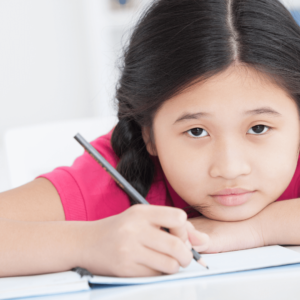We are delighted to share this guest blog from Catherine Lynch of Planbee.com.
What is good mental health and what does good mental health in schools look like? The World Health Organisation defines mental health as:
“a state of well-being in which every individual realises his or her own potential, can cope with the normal stress of life, can work productively and fruitfully, and is able to make a contribution to her or his community.”

In a mentally healthy school, you might expect to see happy teachers who are able to cope with the daily ups and downs of teaching. As well as pupils who approach challenges with confidence and resilience and enjoy being at school.

Luckily, there are lots of small changes we can make to help our pupils improve their mental health and grow up to be the resilient world-changers we know they can be. When we share our calm, not our chaos, with others the impact is huge.

A good place to start is understanding what it looks like, and feels like, to be in crisis. This feeling can affect anyone. It is not limited to the children in your class, so keep an eye out and offer a friendly face to any colleagues you think could do with some help, too.
Fight, flight, or freeze. The acute stress response.
The phrase ‘fight, flight, freeze, or flop’ is also called the acute stress response or flipping your lid. In very simple terms, someone who has reached this point is unable to engage the ‘thinking’ and ‘feeling’ parts of their brain. They are in survival mode.

What might fight, flight, or freeze look like?
Someone in ‘fight’ can look hot and bothered. They can be angry, aggressive, controlling, or argumentative. Someone in ‘flight’ can look very busy, hyperactive, or silly. They might be unable to cope with free time or literally remove themselves from the situation. Someone in ‘freeze’ can look bored or confused. They can come across as forgetful or daydreaming. Someone in ‘flop’ can look bored or tired. They can come across as disinterested or unengaged.

We hope that you don’t see this state presented often in school but, if you do, remember that someone in crisis cannot engage the ‘thinking’ or ‘feeling’ parts of their brain until they feel safe. Once they feel safe you can begin working on rationalising the problem and thinking of different strategies to manage it.
What can we do to improve mental health in schools?
Embedding mental health into everyday life is important. If you make time to have conversations about feelings and emotions when they arise, and before the person has reached a crisis point, they can have a huge impact. In fact, the sooner feelings are acknowledged and valued, the less likely they are to become overwhelming. These conversations do not have to be long. Short and often is more effective than delayed and long.

Talking and remembering can help grow new brain connections that teach us over time how to respond to stressors. It helps us to understand that feelings are transient which can in turn help to change mindsets. So, when the dust has settled, talk. Remind yourself, your colleague, your students that things seemed pretty bad earlier, but they don’t anymore.

When reading books together, make it a habit to discuss how the characters feel, and talk about situations in which they might have felt the same way. The more your pupils are able to make connections between actions, reactions, and feelings the better.
10 practical ways to improve mental health in your classroom
- Create a nurturing environment where everyone feels valued and safe.
- Allow everyone to have a voice. This can be done in several ways, for example by implementing discussion partners or giving children the opportunity to write their ideas down.
- Be playful and have fun. Play fosters creativity, collaboration, and problem-solving all of which are important for good mental health.
- Name feelings and emotions as they arise. This gives children and adults the language to describe how they are feeling. In the words of Dan Siegel ‘Name it to tame it’.
- Take a mood register, either verbally or as a self-registration board to check in with the feelings in the room. Learning to listen to ourselves is often a neglected skill.
- Create an atmosphere where all feelings are allowed. Give feelings an appropriate outlet. Put boundaries in place around behaviours to keep everyone safe and develop strategies to help reinforce those boundaries. For example, you are allowed to feel happy, angry, or sad, you are not allowed to bully or hit.
- Focus on the bigger picture, help children and staff to see past the latest potentially stress-inducing initiative.
- Take learning outside and make it active as much as possible. Learning outside of the classroom provides stimulating and rich real-world experiences.
- Read stories. Take the opportunity to discuss the feelings and actions of the characters. Is there a better way they could have reacted? What led up to the crisis point?
- Encourage calm classrooms. Embedding periods of calm into your classroom through simple activities will help your pupils to feel safer and more peaceful.
Bio:
Catherine Lynch is an experienced teacher, play therapist, and senior manager at PlanBee. PlanBee creates teaching resources for primary school-aged children (aged 5-11). The resources have been created to meet the English National Curriculum objectives.
